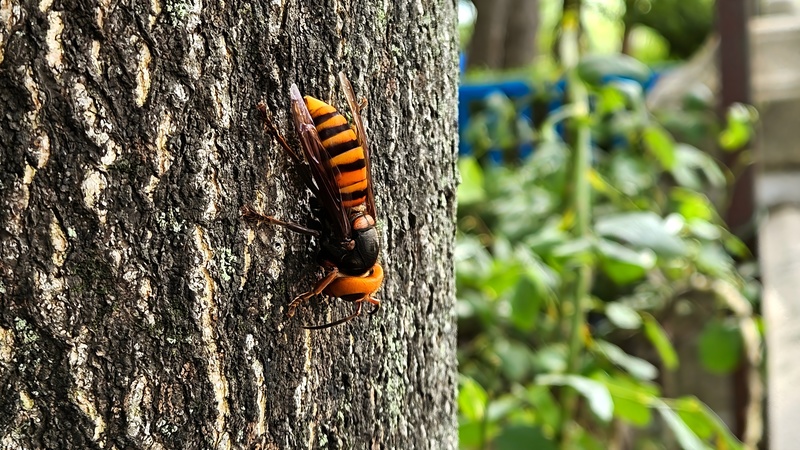ERROR : Server Busy(-1105)
ERROR : Server Busy(-1105)
나무수액을 마시는 장수말벌 (Vespa mandarinia)
수액(나무에서 나오는 액체)은 말벌 성충의 중요한 먹이이며, 특히 여름철에는 수액에 모여드는 말벌을 흔하게 볼 수 있습니다. 말벌은 육식성이 주를 이루지만, 성충은 수액을 통해 당분을 섭취하며 다른 곤충도 사냥하여 애벌레에게 먹이로 공급합니다.
[장수말벌]
영명: Asian Giant Hornet
학명: Vespa mandarinia Smith, 1852
분류: Hymenoptera (벌목) > Vespidae (말벌과) > Vespinae (말벌아과)
장수말벌(Vespa mandarinia)은 벌목(Hymenoptera) 말벌과에 딸린 곤충으로, 현존하는 말벌류 중 가장 크고 강력한 종으로 알려져 있습니다. 그 거대한 몸집과 강력한 독성, 그리고 공격적인 포식 행동 때문에 '장군 말벌'이라는 의미의 이름을 가지게 되었습니다. |

